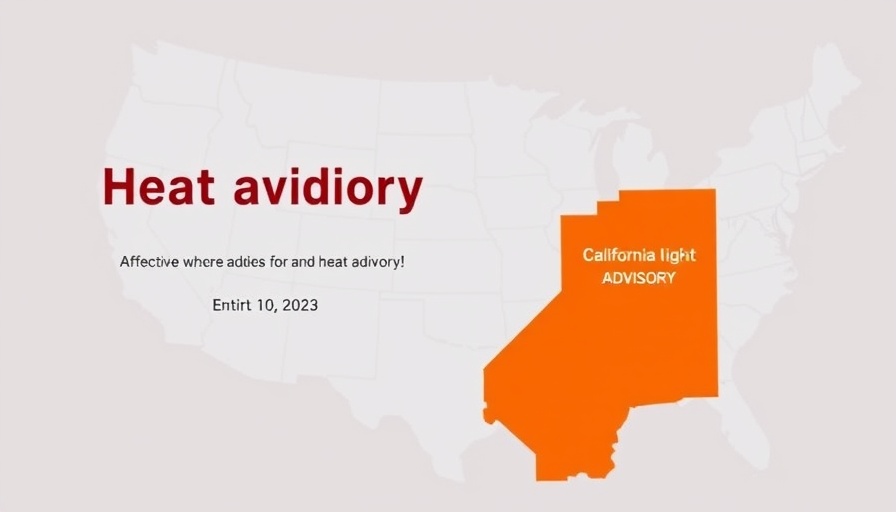
Yosemite Heat Advisory: What You Need to Know
As summer heats up, Yosemite National Park is under a heat advisory until Tuesday night, July 15. The National Weather Service (NWS) has forecasted temperatures soaring up to 105 degrees Fahrenheit. This advisory is particularly relevant for residents and visitors in and around Bakersfield, CA, where similar warm weather patterns are anticipated.
Understanding the Heat Advisory
Issued by the NWS Hanford, the advisory warns of possible heat-related illnesses and extends to various locations, including Yosemite Valley and the southern San Joaquin Valley. Areas such as Merced, Fresno, and Kings Counties are also included, suggesting a broad impact across the region.
Safety Tips: Staying Cool in Extreme Heat
The NWS has provided critical safety recommendations to help individuals cope with the soaring temperatures:
- Stay Hydrated: During these hot days, drink plenty of fluids to maintain hydration levels.
- Seek Cool Shelter: If possible, stay in air-conditioned spaces to avoid overheating.
- Avoid Sun Exposure: Limiting your time in direct sunlight can greatly reduce the risk of heat-related illnesses.
- Watch Over Vulnerable Groups: Check on elderly neighbors and relatives, children, and pets—their health can be most at risk during heat waves.
- Limit Outdoor Activities: Push strenuous activities to the cooler parts of the day, preferably in the early morning or late evening.
Employing Additional Safety Measures for Workers
For those who work outdoors, the Occupational Safety and Health Administration (OSHA) advises taking frequent breaks in shaded or cooled areas. Recognizing the signs of heat exhaustion and heat stroke is crucial. Symptoms like heavy sweating, weakness, and headaches should not be ignored. In emergency situations, it's essential to act swiftly; relocate the affected person to a cooler space and seek medical assistance by calling 911.
The Importance of Staying Informed
Staying vigilant during heat advisories is vital. Heat waves can have serious health implications, leading to heat-related illnesses that can be extremely dangerous, especially in vulnerable populations. Understanding the importance of monitoring weather updates and recognizing the symptoms of overheating can be lifesaving.
Community Connection: Local Responses
As the temperature rises, community response becomes critical. Local organizations can play essential roles by providing information and shelter to those in need. Public libraries, community centers, and cooling stations might become havens for those seeking refuge from the heat.
Conclusion: Take Action for Your Safety
In light of the extreme temperatures forecasted, it is essential to take the NWS guidelines seriously. Staying hydrated, avoiding strenuous outdoor activities during peak hours, and checking on those who are most vulnerable are all straightforward yet effective strategies to minimize heat risks. As you navigate this heat wave, remain informed and proactive in your safety measures.
 Add Row
Add Row  Add
Add 



Write A Comment